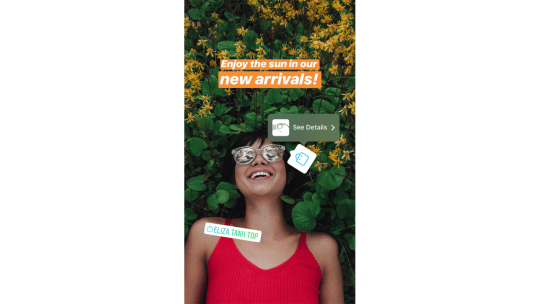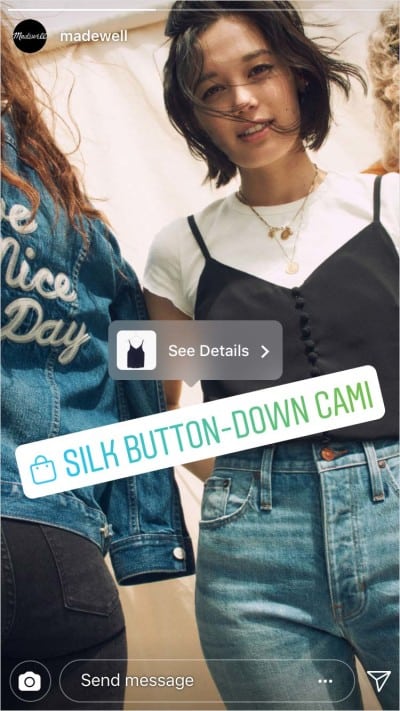
In June, Instagram announced it would be adding the option for "select" brands to allow customers to shop via special tags on Instagram Stories. And, after piloting the feature for several months to its test group, the tap-to-buy option has been made available for all business accounts approved for Shopping as of Sept. 17.
The feature is likely to pay off for brands on the platform. In March, the company published data from a survey stating that more than one in three daily Instagram users say they have become more interested in a brand after seeing it on Instagram Stories. And, according to Instagram's latest press release, users watch brands' Instagram Stories to "get an insider view of products they like" and find out about new ones.
Using Instagram as a point of consideration before purchase is a huge win for marketers and communicators on social media. For years, communicators have struggled to pinpoint the exact ROI on ad spend, especially for a difficult to quantify goal such as raising awareness of a brand or product.
With the ability to click directly to shop, there's less friction for customers, not to mention a far shorter route to tying social media efforts to the bottom line. And, rather than take a cut of profits, Instagram is banking on businesses to advertise more on the platform in order to drive sales there. (Currently, posts and Stories with tap-to-buy stickers are only available as organic posts, and can't be promoted directly.)
At this point, the only missing link in the payment flow is a lack of in-app purchasing, but the social media giant has clearly thought of that as well. While tapping product labels in Stories or posts currently sends users to a brand's e-commerce website, Instagram quietly began rolling out its own payment service in April, according to TechCrunch. It's likely only a matter of time before Instagram streamlines the Shopping feature with in-app purchases.
Before brands can start plugging stickers and direct-to-buy labels in their posts and Stories, however, they need to be approved by Instagram. Businesses can either start the approvals process via Business Manager in Facebook or a Shop section on a Facebook Business page. Instagram has provided a step-by-step guide for brands.
Tying Instagram efforts to the bottom line is likely a net win for marketers. But brand communicators might be served by taking a wary approach. Banking on Instagram for sales means handing over the keys to external channels like Facebook and Instagram for sales of products and services, rather than keeping sales on owned properties (the company website, e-commerce sites, etc.).
And while Instagram's marketplace is enticing, serving over 500 million users daily, remember: Before Instagram parent company Facebook found itself quagmired in fake news and election meddling scandals, losing trust with users, it was heralded as a great boon for communicators. If consumers continue to open their wallets while scrolling, they could also be opening themselves up to security issues—and liability—that both social platforms and the brands that use them will need to contend with.
Follow Sophie: @SophieMaerowitz
